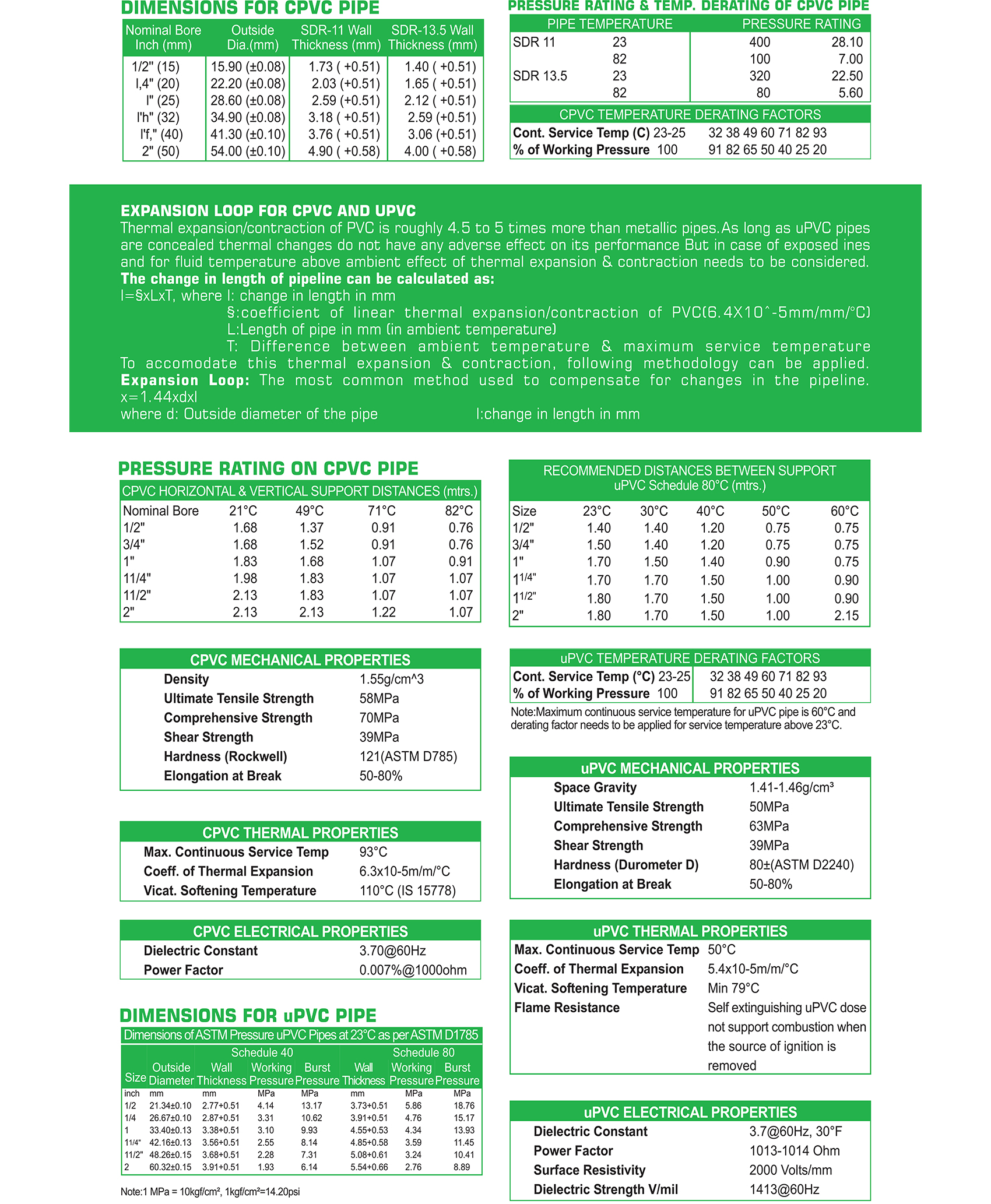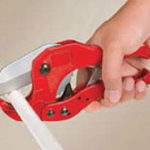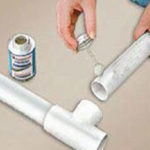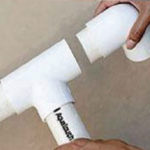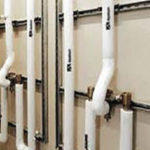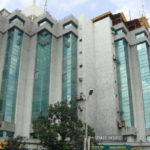
inter-tech plastic products
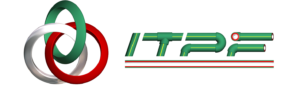
About the Company
INTER TECH PLASTIC PRODUCT INDUSTRIES. is a subsidiary of ‘INTER TECH GROUP OF INDUSTRIES’. The group is involved in diverse areas of manufacturing businesses ranging from ‘Iron & Steel fabrication and Galvanizing’ to manufacturing of ‘PVC NS popes & fittings, uPVC/ASTM pipes & fittings, PPR pipes & fittings, HDPE NS pipes’ and manufacturing of ‘Woven, Non-Woven bags and sacks and HDPE tarpaulins’.
INTER TECH PLASTIC PRODUCT INDUSTRIES specializes in manufacturing of CPVC pipes and fittings ‘ITPF maxflow’ CPVC piping systems are not just products but a step towards a future of effortless plumbing solutions. All our CPVC Pipes & Fittings are made from specially formulated compounds in accordance with Standardds IS 15778, ASTM D2846 & for fittings ASTM D2468. Our CPVC pipes come in 1/2″ to 2″ Copper Tube Size (CTS) dimensions along with two different standard dimensions-SDR-11 and SDR-13.S & uPVC Pipes come in 1/2″ to 2″ dimensions along with two different standard dimensions-SCH-40 and SCH-80. All our fittings are manufactured as per SDR-11, making them ideal for all applications and usage.
Applications
ITPF ‘Maxflow’ CPVC & UPVC Pipes & Fittings can be installed in homes, schools, hospitals, industries, resorts, high rise buildings, commercial complexes, independent villas and everywhere and any where there is a need for supply of portable hot and cold water.
The CPVC foredeal
CPVC Pipes & Fittings surely have their own list of qualities which makes them the best choice for plumbing applications. Apart from the obvious advantages like easy cutting in cold temperatures, corrosion-free technology, high impact resistance and better durability, there are various other qualities which make CPVC better than its alternatives.
Unmatched performance: Compared to copper and conventional CPVC, ‘ITPF Maxflow’ CPC can withstand a diverse range of hot and cold water for a lifetime due to its innovative chemical formula. Besides, its resistance to Low-pH water, coastal salt, air or corrosive soil makes it ideal for almost any demographic region. Other advantages include permanent joining, excellent heat retention, cement fusing and quiet operation.
Better than Copper: Although copper plumbing has been used since ages, it comes with its share of drawbacks. Copper is prone to corrosion and pitting due to harsh water; has low heat retention, noisy operation, and is also susceptible to permanent damage after installation. CPVC ensures you don’t face any of these issues, ever.
Even better than PEX: PEX or Cross-linked polyethylene is surely better than copper when it comes to piping and fitting but CPVC trumps it on many fronts with ease. Unlike PEX, CPVC isn’t affected by processing methods, multiple standards, expensive tools, building code questions, insert fitting and a few others.
Features and Benefits
- Resistant to Corrosion: Irrespective of Water Quality, “ITPF MaxFlow” CPVC Pipes & Fittings give excellent resistance to corrosion. One doesn’t need to worry about impure water due to corrosion of metal pipes or soldered joints.
- Free from Bacterial Growth: Compared to other piping materials like copper, steel and other thermoplastics; CPVC has the lowest possibility of bacterial build up.
- Handles Hot and Cold Water: “ITPF Max Flow” CPVC works equally good with both extremely hot and cold water. This compatibility is second to none owing to its heat efficiency and lower installation cost.
- Low Thermal Expansion: Compared to other plastic pipes,CPVC has a lower coefficient of thermal expansion, thereby avoiding looping of the pipe due to heat expansion.
- Easy Welding Process: CPVC employs simple solvent cement along with inexpensive tools. Also electrical source isn’t needed as well.
- Superior Insulation: Compared to metal pipes, CPVC does not lose heat leading to less heat loss and decreased thermal expansion.
- Safe from Fire: These pipes do not support combustion due to Limiting Oxygen Index (L01) of 60 making it combustion resistant. It doesn’t lead to flaming drips, high smoke generation and excess fire load.
- Tough, Durable Material: CPVC material is extremely tough and durable, making it possible to achieve same flow rate with a smaller pipe size. Compared to all other thermoplastics, CPVC has a much higher strength and hence has higher pressure bearing capability.
- Resistant to Damage by Chlorine: Chlorine is mostly used in India for cleaning potable water but it adversely affects metal pipes. CPVC pipes solve this issue with Chlorine being unable to break its polymer chains, thus avoiding possible leaks.
- Resistant of Chemicals: “ITPF Max Flow”CPVC pipes are highly resistant to many chemicals, even strong mineral acids & bases.
- Accepted by World: CPVC Pipes and Fittings are the preferred choice in many countries including UK, USA, Germany, Canada, France, Netherlands, & Middle East etc. It is also the chosen potable water supply system in India.
- Avoids Scale, Pit or Leach Formation: CPVC manages to maintain full water carrying capacity even after years of its installation due to its resistance to low pH water. coastal salt air exposure and corrosive soil.
- Cost Effective Choice: CPVC Piping & Fitting is highly cost effective. It saves cost on tools, fittings, anchors, offsets, labour, loops etc. They can last over 50 years, bringing down the overall cost of the entire piping and fitting system as a whole.
Safe Testing of CPVC Pipe Systems
After everything is said and done, testing the CPVC/uPVC Pipes and fittings is necessary to inspect the system for leaks. There are mainly two methods which are employed for this safe testing of CPVC Piping systems.
Water Testing
As the CPVC/uPVC Pipes & Fittings have been designed to transport water, Water Testing proves to be a safer and more accurate for everyone. The test lets you find out if there is any leakage or seepage and correcting them before laying them out finally for use. A Water Test is vital in visually inspecting the joints before closing in the piping or even back filling underground piping. If there is any leakage, you can easily spot it when testing with water. Air Testing makes it difficult to spot leakages. The system pressure changes with temperature in Air Testing, making it inherently flawed. Water pressure is not as much sensitive to temperature variations and hence provides more accurate results.
Insert plugs through test tees for proper water test. Plug all other openings or cap them with test plugs/ test caps. Fill the system being tested to its highest point. As the water fills the vertical pipe, hydrostatic pressure is created and the water height increases. In order avoid air bubbles, fill the system slowly and remove the trapped air from the pipes. If the entrapped air is no removed properly, it might lead to faulty results.
If in case a leak if found, cut out the joint and discard it. Using couplings, install a new section. Once a system is tested successfully, drain it completely and move on to the next system with the same procedure. Water Testing surely is a safer and more thorough method compared to Air Testing. Investing proper time in these tests ensures error-proof installation and a lifelong application.
Cautions of CPVC:
- CPVC is joined with the help of a chemical called solvent cement which is extremely harmful to human health and environment. the caution message written on the outer label of the box should be read very carefully before usage.
- CPVC pipe is generally not considered a recyclable plastic and is considered a “contaminant” in the waste stream.
- CPVC releases toxic smoke containing cancer-causing dioxins when burned in residential fires, plastic incinerators and landfill fires. Dioxin is considered one the most toxic chemicals known to science.
- CPVC plumbing pipe systems may leach potentially toxic chemicals such as chloroform, tetrahydrofuran, methyl ethyl ketone, acetone and organotins into drinking water. These chemicals may cause cancer in humans or other serious health impacts. When leached from CPVC plumbing systems, the public may be exposed to these chemicals through consumption of drinking water, inhalation and skin exposure during bathing.
- CPVC when installed in a place which is in direct exposure of sun is required to be applied with a coat of white paint to avoid degradation of pipe and fittings.
- CPVC is brittle in nature and has low impact strength as compared to other similar purpose piping systems.
Joining Instructions
When it comes to uPVC/cPVC and pressure pipes, the cold welding process is the ideal choice.
Cutting the uPVC/CPVC Pipe: Cut the pipe with instruments like the hand saw with a suitable guide or by a pipe cutter.
Preparing The Joint: At 10•-1s•, chamfer or de-burr the pipe. With a knife, abrasive paper or file, remove the burrs from the inside and outside surfaces of the pipe.
Test The Dry Fit Of The Joint: In order to ensure there is no leaking, test the dry fit by inserting the pipe into the fitting and check the interference. It should occur at about I/3rd to 2/3rd of the socket depth.
Cleaning: Finally, use a clean dry rag to remove the dirt, moisture or grease from the pipe end and fitting sockets.
Solvent Cement Application: Now apply the cement to the inside of socket and outside of pipe end. The application should be light and uniform. Application should be quick so that it doesn’t dry but also ensure that all the jointing surface areas of the pipe and fitting are completely covered by the cement. Excessive application of cement in the bell socket must be avoided.
Assembly Of The Joint: While the cement is still fluid or wet, bottom the male end of the pipe forcefully in the socket. This must be done immediately after the application of the last coat of cement. To distribute the cement evenly, turn the pipe or fitting to 114th (but not after the pipe is bottomed). Remove the excess cement at the end of the fitting socket.
Let The Cement Cure: It is advisable to not disturb the joint immediately after cementing. The recommended curing time is 12 hours minimum and during that time, do not pressurize the system. The cure time depends on the weather conditions too, so decide as per your discretion.


